japanese art history
1/17
There's no tags or description
Looks like no tags are added yet.
Name | Mastery | Learn | Test | Matching | Spaced |
|---|
No study sessions yet.
18 Terms
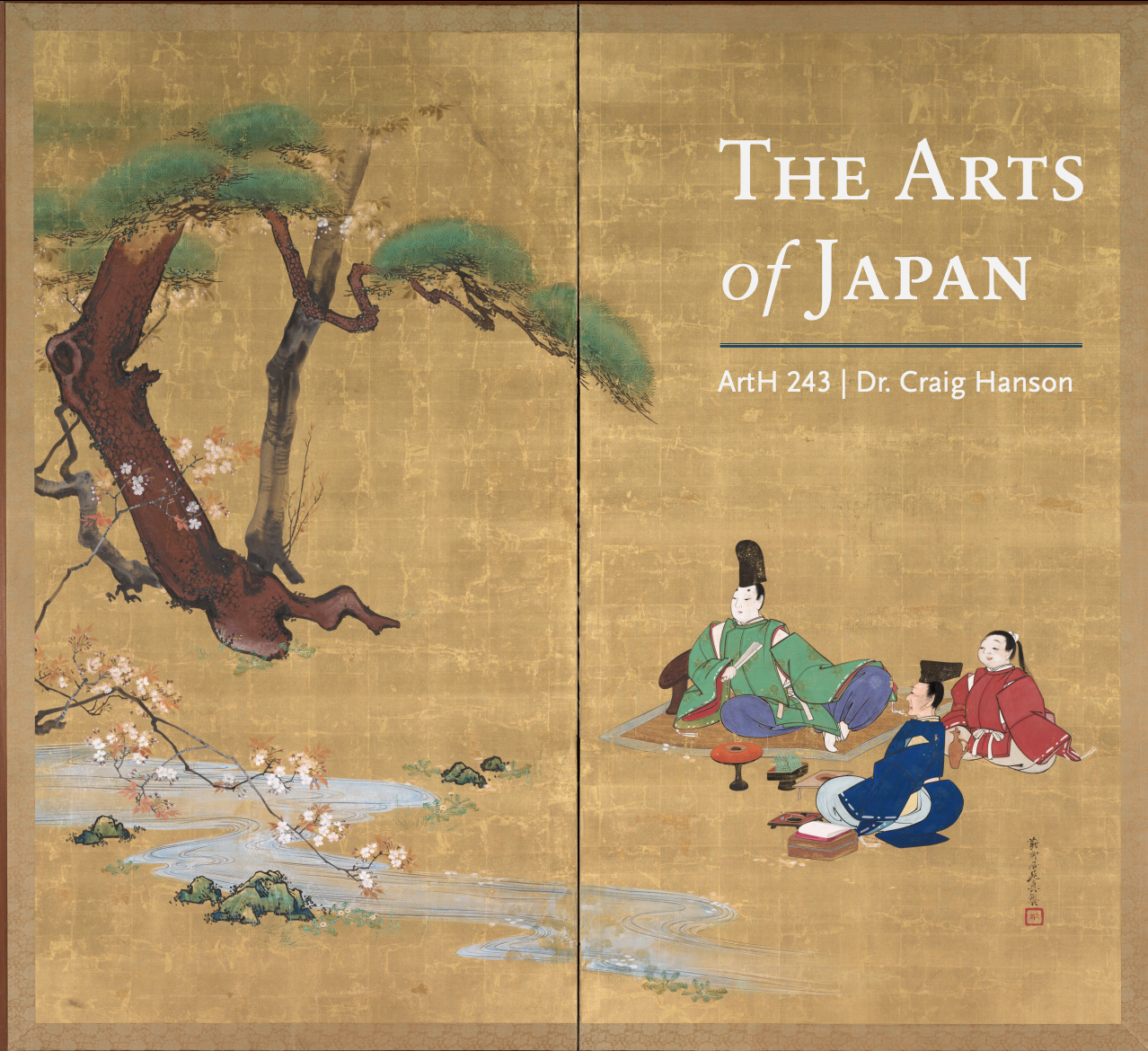
Zeshin, Narihira Viewing Cherry Blossoms, from 'The Tales of Ise', ca. 1880s, two-panel folding screen with ink, color, lacquer, and gold on silk, 69 × 75 inches (Cleveland Museum of Art).
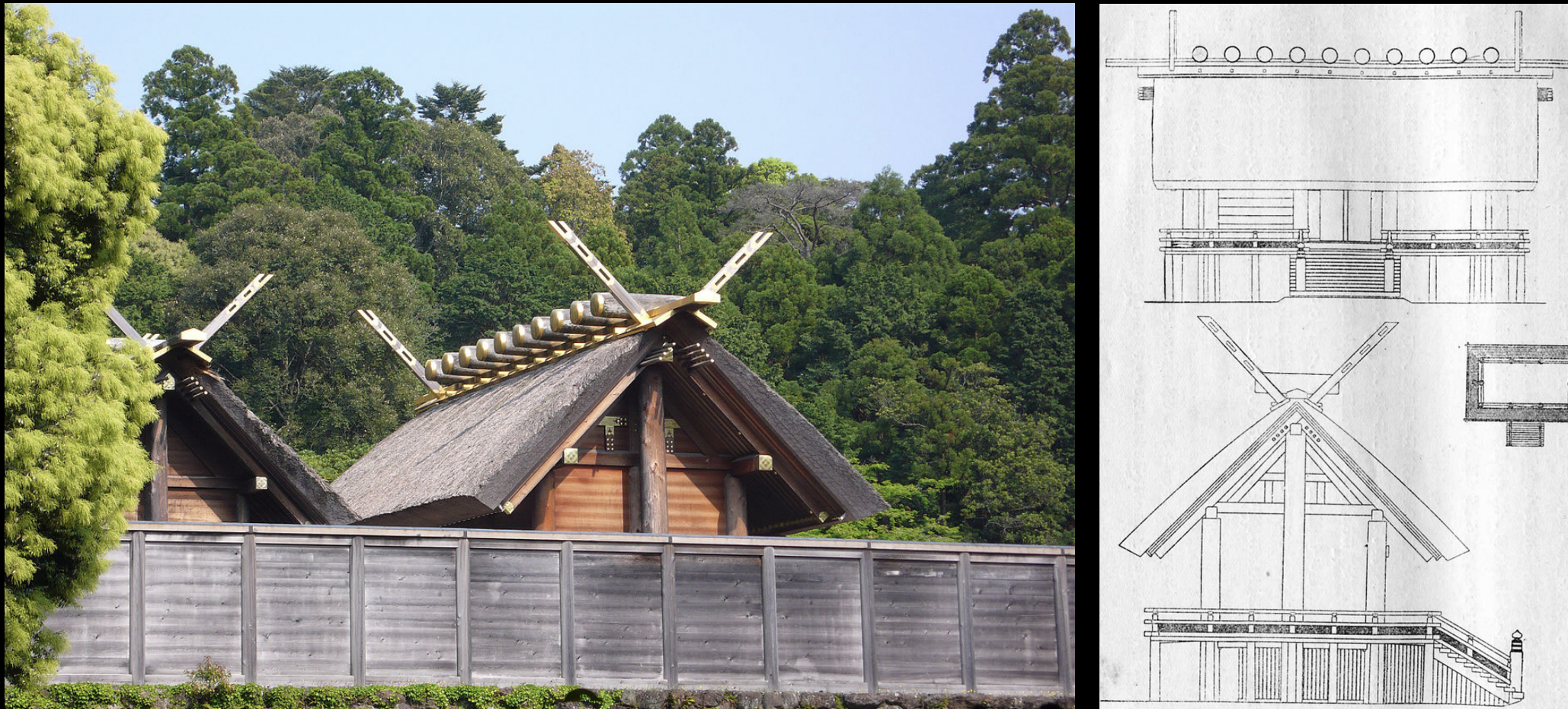
Grand Shrine at Ise, abode of Amaterasu, sun goddess; the key buildings, first constructed in 690, are rebuilt every 20 years—most recently in 2013, for the 62nd time.
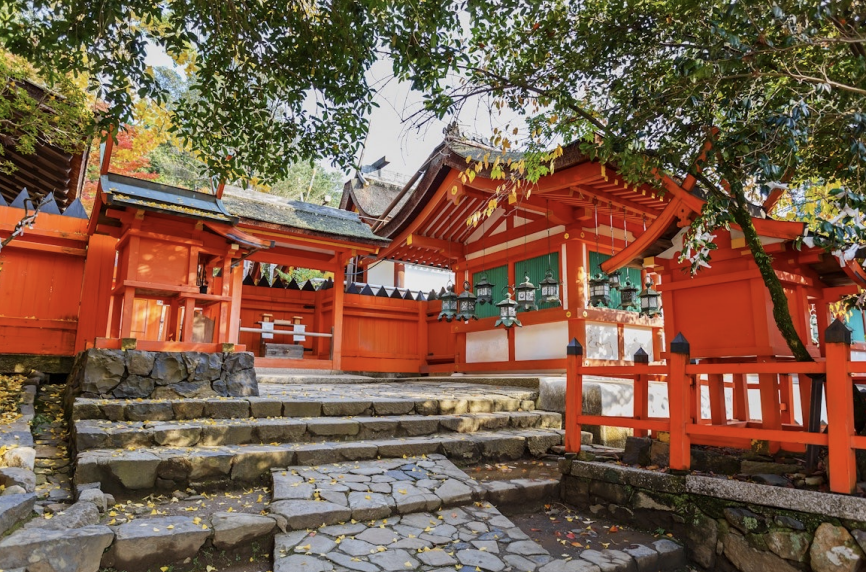
Kasuga Taisha — Shinto shrine in Nara founded in 768 by the powerful Fujiwara clan (‘field of wisteria’), it is one of Japan's most important sacred sites. There are some 3000 lanterns, all of which are lit twice each year. The adjacent Kasugayama primeval forest is also celebrated; logging and hunting have been prohibited since 841.
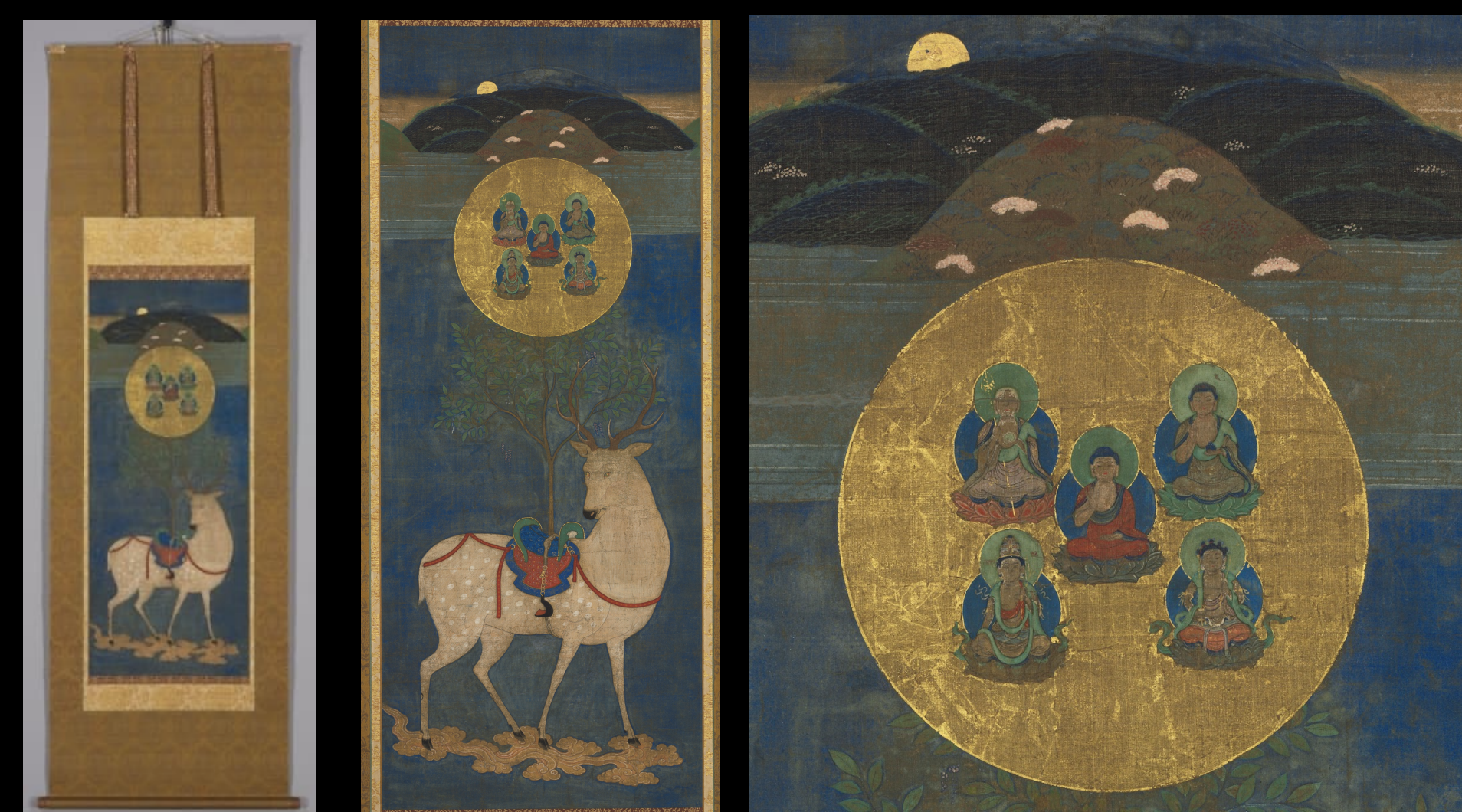
Kasuga Deer Mandala, mid-1300s–1400s, ink, color, and gold on silk, 38 × 16 inches (Cleveland Museum of Art). Legendary myths of the origins of the Japanese people (and the imperial line) sometimes include a mirror hanging from a tree. Other stories tell of Shinto deities arriving at the Kasuga shrine in Nara on the back of a sacred white deer. The Buddhist figures on the mirror point to the accommodation of Shinto and Buddhist practices in Japan.
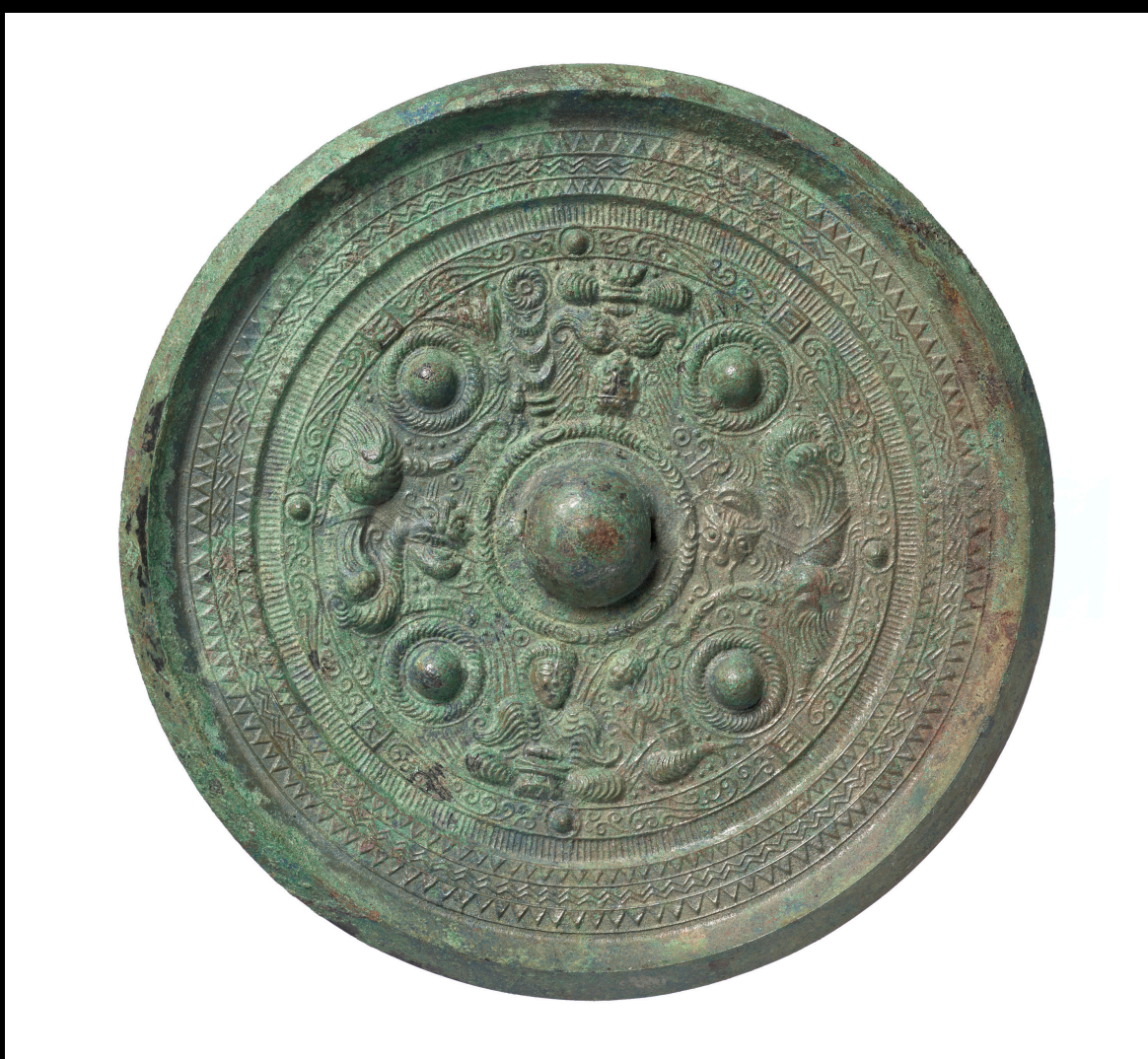
Kofun Mirror with triangular and arabesque patterned band, gods, and animals, ca. 400, bronze, diameter 21 cm (Kyoto National Museum).
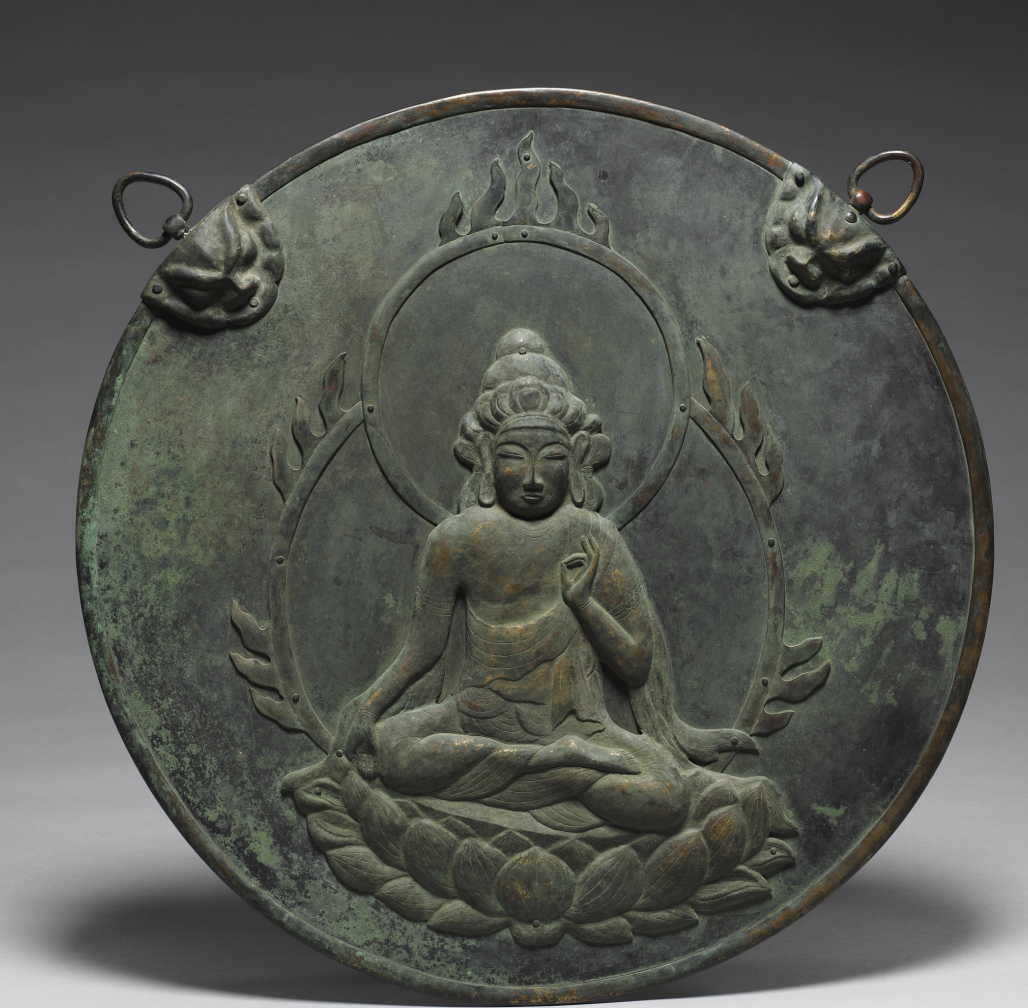
Votive plaque with Kannon, the bodhisattva of mercy and compassion, ca. 1360, bronze with repoussé and etching, 21 inches diameter (Cleveland Museum of Art).
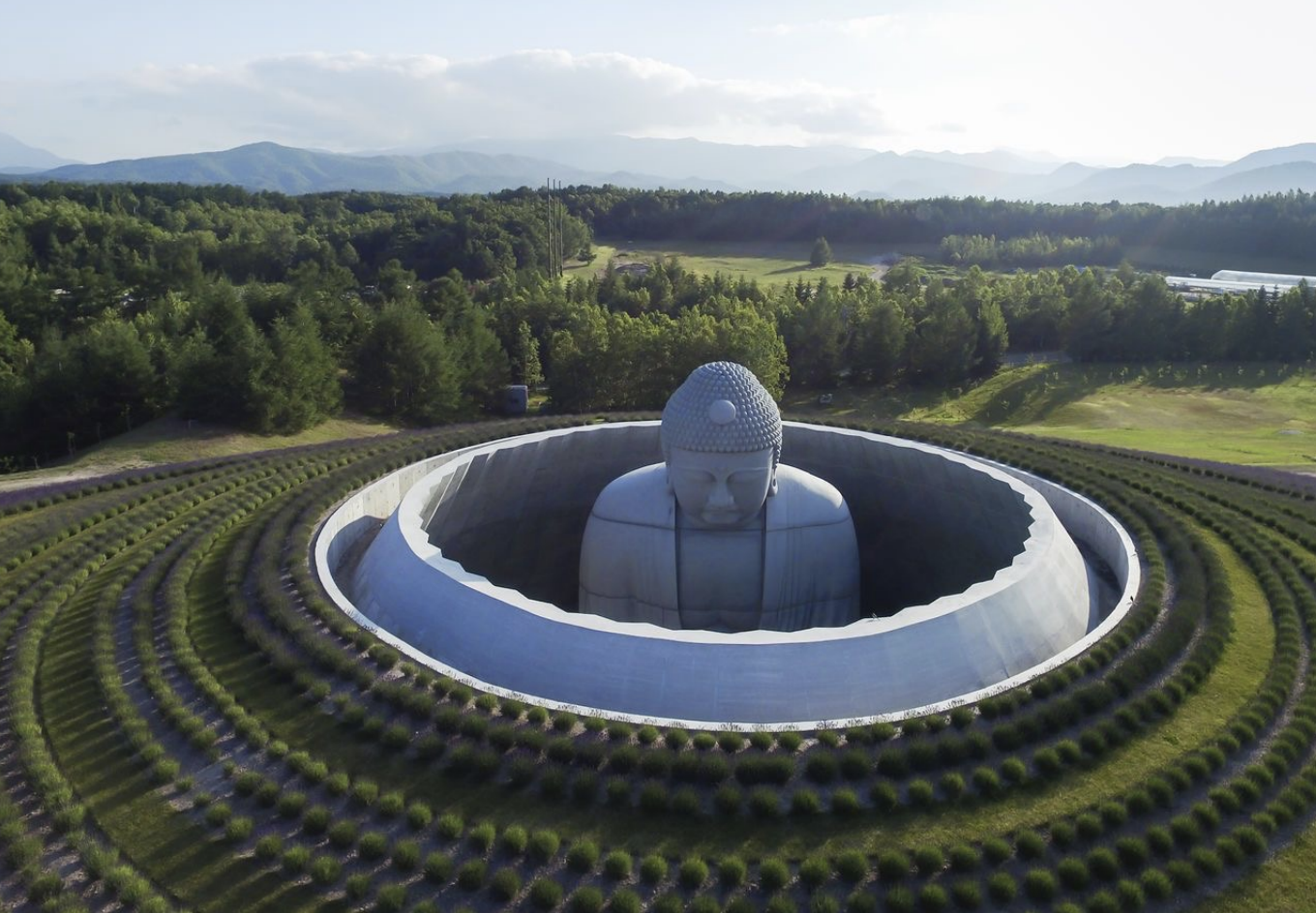
Ando Tadao, Hill of the Buddha, 2015, Sapporo. The shrine features a 44ft tall Buddha encircled by an artificial hill rotunda planted with 150,000 lavender plants. The statue was sculpted around 2000.
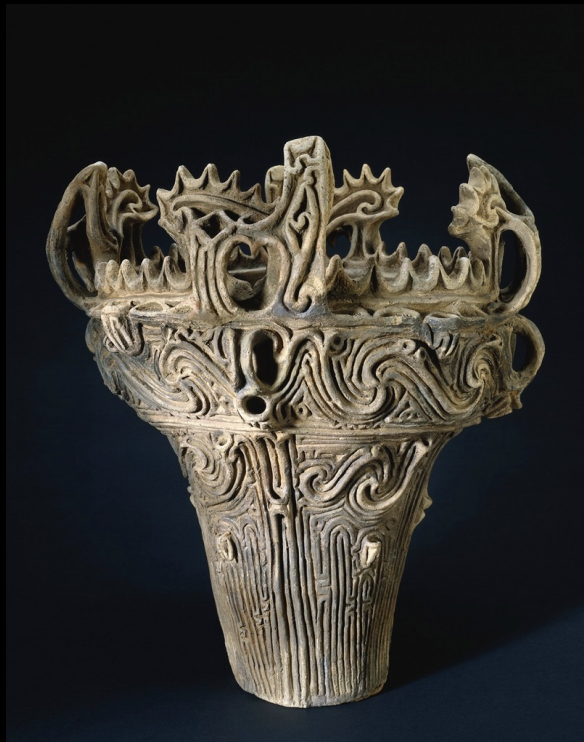
‘Flame-rimmed’ vessel, Jōmon Period, ca. 2500 BCE (Cleveland Museum of Art).
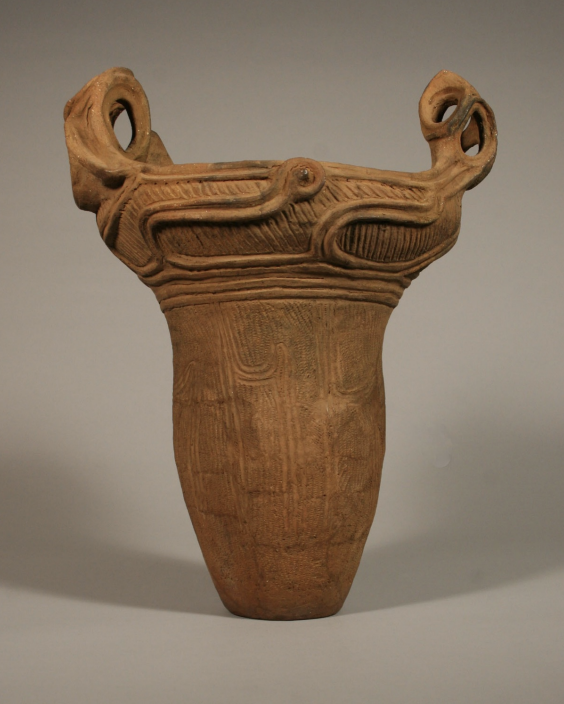
Jar with Handles, Jōmon Period, ca. 2000 BCE (Art Institute of Chicago).
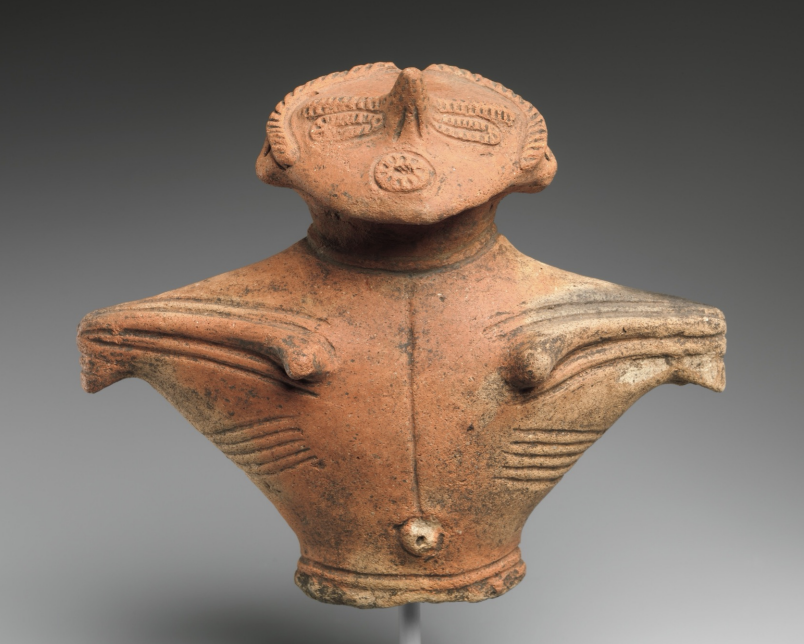
(Dogū (clay figurine), Final Jōmon period, ca. 1000–300 BCE, clay with cord-marked and incised decoration, 6 inches high (NY: The Met). Like most figurines found at Jōmon sites, this one is broken at the waist, perhaps deliberately
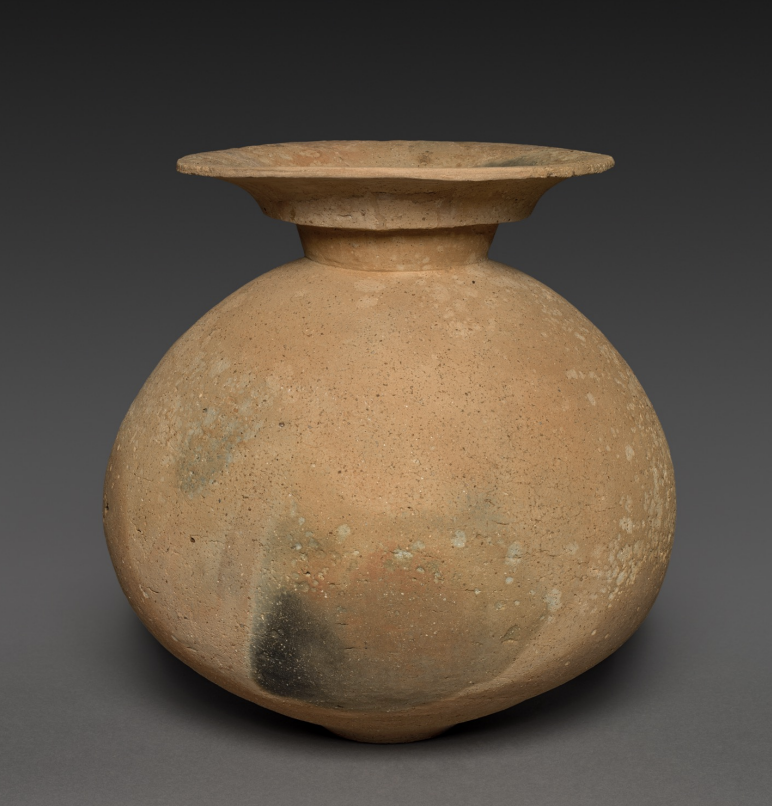
Vessel, 300s BCE, Yayoi period, earthenware with traces of red slip, 13 inches tall (Cleveland Museum of Art). Points to introduction of new ideals, techniques, and materials from Korea: rather than coils, wide bands of clay were smoothed into each other (a practice from Korea).
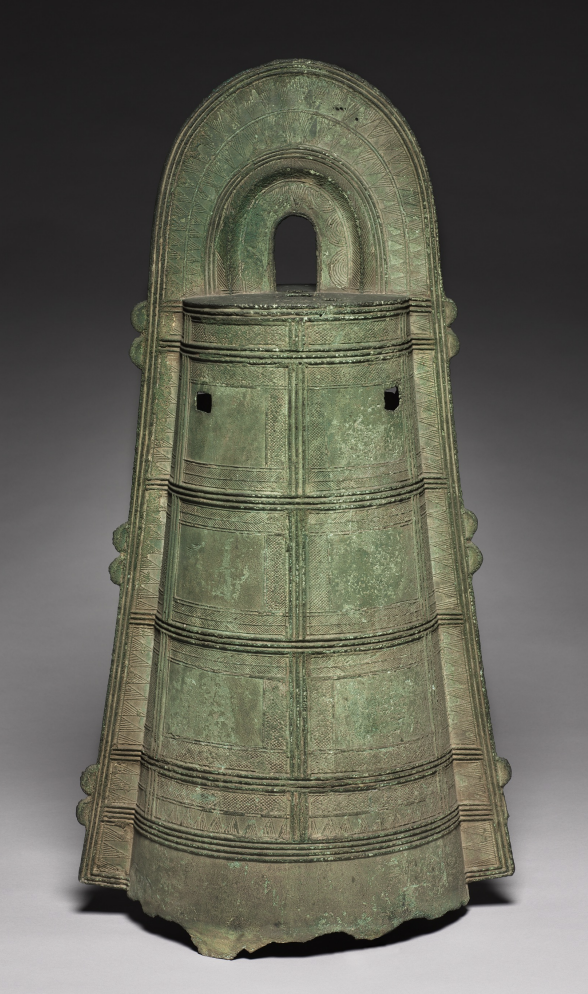
D ōtaku (ritual bronze bells), ca. 100 –200CE, 38 inches high (Cleveland Museum of Art).
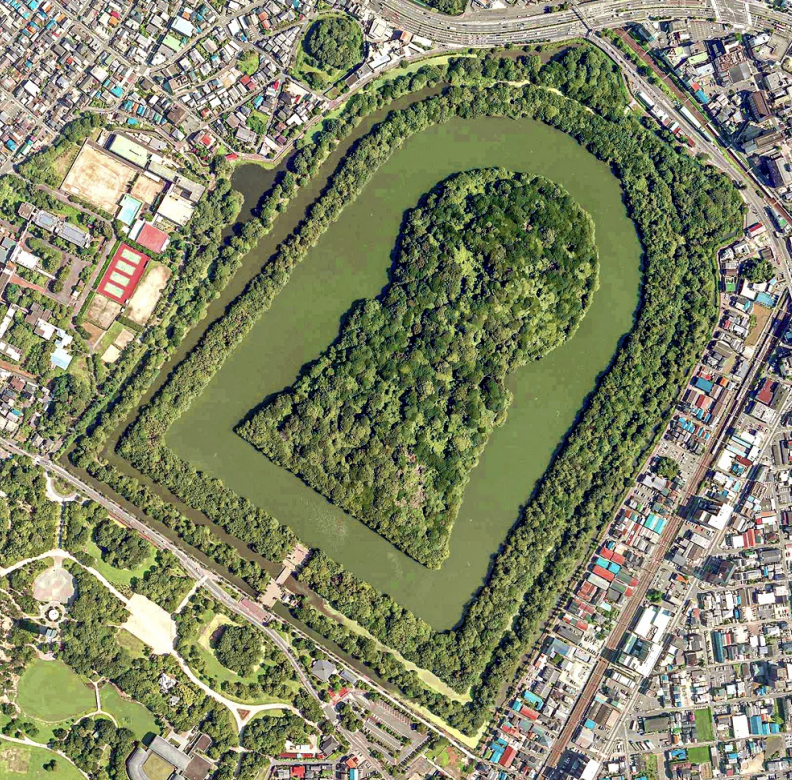
Tomb of Emperor Nintoku in Sakai (near Osaka), ca. 400. The surface of the mound may have been covered with 20,000 haniwa.
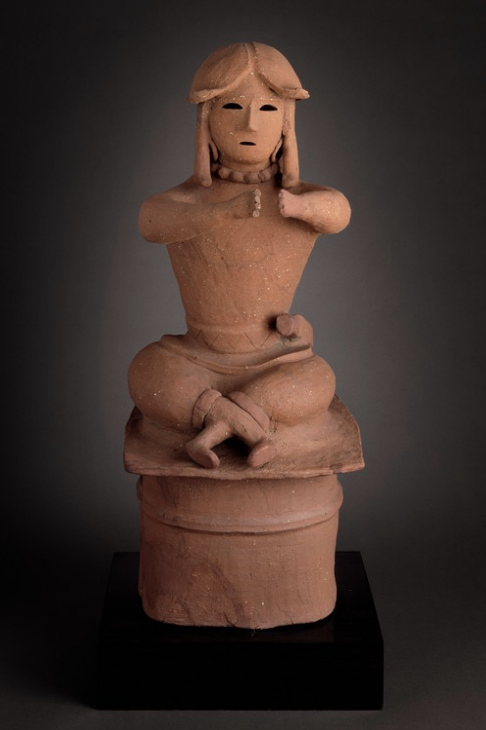
Haniwa, warrior figure, ca. 500–600, coil-built eathenware with applied decoration, 31 inches high (LACMA).
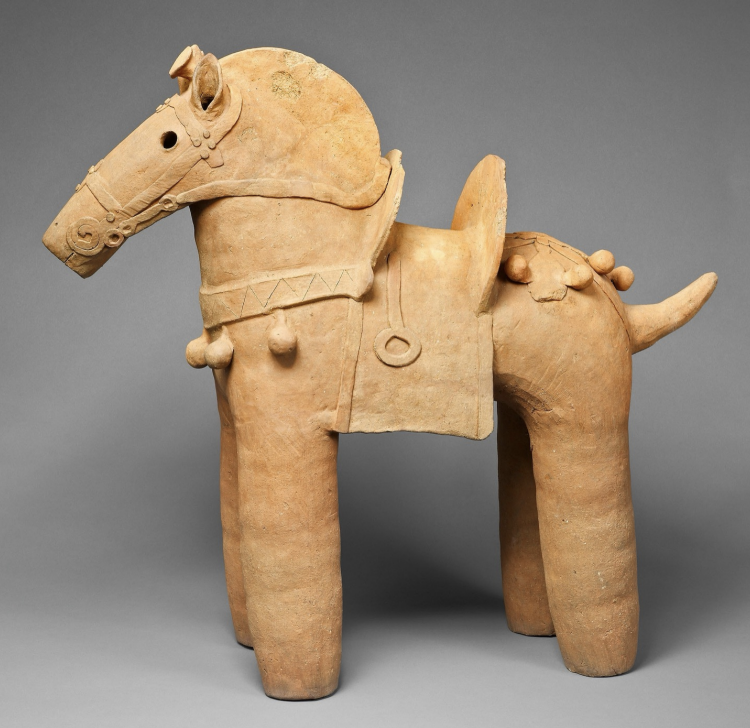
Haniwa, horse, fifth century, 31 inches tall (Art Institute of Chicago).
Jōmon
– ‘rope impressed’ 10,000–400 BCE
Yayoi
– named for a neighborhood in Tokyo where artifacts were found in the 19h century 400BCE–250
Kofun
– ‘burial mound’ 250–600